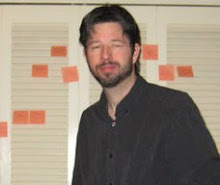There was a time when you could smoke a cigarette in a coffee shop. And I would, by the handful. My notebook open, pen poised, black coffee and a smoke. It was how I got the creative juice flowing. In fact, an intake of nicotene increases the synaptic connections in the brain. It's my theory that this random increase helps with creativity, which essentially, is taking unlike things and putting them together. So imagine random synaptic links being created, making unusual connections in your brain. Nicotene and caffeine both increase your alertness which both might be a contributor to creativity as well.
Well, because I prefer to live longer, not shorter, I gave up those two habits almost a decade ago. Has my creativity suffered? I don't think so. I eat better now, exercise more and sleep with more regularity. All these things contribute not just to my general health, but to my mind health. I believe I'm more capable of becoming creative at any time, at will, and am not dependent on the mood and mental swings created by drug dependency (yes caffeine is a drug, friends).
There is no doubt that creativity is a fragile state, which must be flattered, cajoled and pampered. But after having done this for a long time, one learns the tricks of the trade, as it were.
Wednesday, June 9, 2010
Chemical Creativity
Labels:
advertising,
art,
artist,
caffeine,
chemical,
creativity,
drug,
health,
nicotene,
synaptic
Tuesday, June 1, 2010
Art Vs. Success
As ad makers there is always art in what we do. But it is easy to get the idea of pure art mixed up with success in the ad world.
To clarify, let me elaborate on how I define pure art. Pure art comes from a deeply personal place within an artist, much of it from the subconscious. The main point here is that a masterpiece is a work of art that can only have been created by that one artist, influenced by that person's particular amalgamation of experiences and talents. And while there is an element of audience in the artistic process that can influence the piece, the artist creates for him or herself first. It is a movement from artist to audience.
An advertisement is created wholly with the consumer in mind. It is the foremost point of the work.. And while an ad can benefit dramatically from the power and process of pure art; it's goals are different. It's needs are different. And, sometimes to its detriment, it has multiple collaborators with inherently different perspectives.
Very often the designer or writer, who is by necessity passionate about their craft, feels that the ad should be pure art and creates something beautiful. But a work of pure art can very rarely satisfy all the needs of an ad. Mainly, is it speaking to the right audience? And is it communicating the right message for the brand -- the brand that has been painstakingly built up over years, sometimes decades. Sometimes, the answers are yes, and everyone wins. But often, the art must bend.
In the end, both art and advertising have a responsibility to communicate, with power and engagement. It is difficult to create pure art to be used without alteration as the perfect ad. But it is almost impossible to create a great ad with no art at all.
To clarify, let me elaborate on how I define pure art. Pure art comes from a deeply personal place within an artist, much of it from the subconscious. The main point here is that a masterpiece is a work of art that can only have been created by that one artist, influenced by that person's particular amalgamation of experiences and talents. And while there is an element of audience in the artistic process that can influence the piece, the artist creates for him or herself first. It is a movement from artist to audience.
An advertisement is created wholly with the consumer in mind. It is the foremost point of the work.. And while an ad can benefit dramatically from the power and process of pure art; it's goals are different. It's needs are different. And, sometimes to its detriment, it has multiple collaborators with inherently different perspectives.
Very often the designer or writer, who is by necessity passionate about their craft, feels that the ad should be pure art and creates something beautiful. But a work of pure art can very rarely satisfy all the needs of an ad. Mainly, is it speaking to the right audience? And is it communicating the right message for the brand -- the brand that has been painstakingly built up over years, sometimes decades. Sometimes, the answers are yes, and everyone wins. But often, the art must bend.
In the end, both art and advertising have a responsibility to communicate, with power and engagement. It is difficult to create pure art to be used without alteration as the perfect ad. But it is almost impossible to create a great ad with no art at all.
Labels:
ad,
advertising,
art,
artist,
artistic process,
communicate,
marketing,
masterpiece
Subscribe to:
Comments (Atom)

